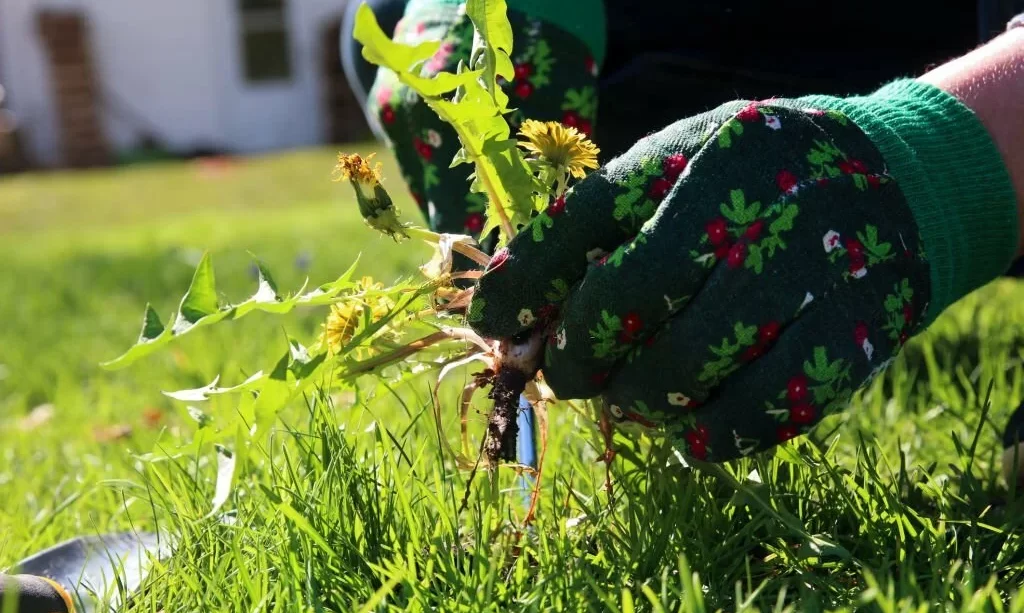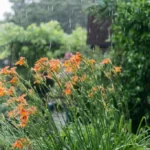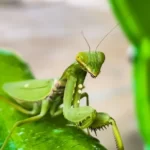Weeds, those relentless intruders in our gardens, lawns, and landscapes, seem to appear like uninvited guests. They spring up seemingly out of nowhere, competing with our carefully cultivated plants and demanding our attention. The mystery of where these stubborn plants come from has left many gardeners puzzled. In this article, we’ll delve into the world of weeds, seeking to unravel the secrets of their origin. From the nature of weeds to the natural mechanisms that disperse their seeds, we’ll explore the fascinating journey of these uninvited guests into our outdoor spaces.
- Designed to prevent weeds; will not aid in eliminating existing weeds
- Contains 0.48% of the active ingredient prodiamine for professional-grade weed control for early spring and fall applications
- Prevents grassy and broadleaf weeds, including crabgrass, poa annua, goosegrass, henbit, and more
- DG Pro formulation allows for more particles per square inch and superior performance
- Made in the USA
The Nature of Weeds
Weeds are the botanical rebels of the plant kingdom, known for their ability to grow where they’re not wanted. These plants are characterized by several key traits that set them apart from desired vegetation:
- Rapid Growth: Weeds are often fast growers, competing vigorously for sunlight, water, and nutrients with other plants. Their rapid growth can make them a formidable opponent in the garden.
- High Reproductive Capacity: Weeds are prolific seed producers. They can produce a significant number of seeds, each with the potential to germinate and grow into a new weed plant.
- Adaptability: Weeds display remarkable adaptability to different environmental conditions. They can thrive in a range of soil types, temperatures, and moisture levels.
- Invasive Behavior: Weeds often exhibit invasive behavior, outcompeting native or cultivated plants and disrupting ecosystems.
- Undesirability: One of the defining features of weeds is that they are generally considered undesirable in the context of a garden or landscape. They can crowd out desired plants and require control or removal.
Natural Seed Dispersal
The presence of weeds in your garden often begins with the natural dispersal of weed seeds. Weeds have developed various mechanisms for spreading their seeds far and wide. Some common methods of natural seed dispersal include:
- Wind Dispersal: Many weed seeds are equipped with structures that allow them to be carried by the wind. They can catch the breeze and travel considerable distances, settling in new locations where they can germinate.
- Water Dispersal: In environments with water sources like rivers, streams, and ponds, water can carry weed seeds downstream, depositing them in new areas. Water-dispersed seeds are often adapted to float.
- Animal Interaction: Animals can inadvertently aid in seed dispersal by carrying weed seeds on their fur, feathers, or in their digestive systems. These seeds may be deposited as animals move about.
Understanding the natural seed dispersal methods of weeds is key to managing their presence. By knowing how weeds spread, gardeners can take steps to prevent or control their growth and reduce their impact on cultivated landscapes.
Human-Related Weed Introductions
While the natural dispersal of weed seeds plays a significant role in weed propagation, human activities also contribute to the introduction and spread of these unwanted plants. Inadvertently, we become agents for weed dispersal in several ways:
- Gardening Practices: Gardeners who use compost made from plant material that contains weed seeds may unknowingly introduce weed seeds into their gardens. Similarly, the transfer of potted plants from one garden to another can bring weed seeds along.
- Agricultural Practices: In agricultural settings, machinery, vehicles, and equipment can transport weed seeds from one field to another. Farm animals may also carry weed seeds in their fur or digestive tracts.
- Construction and Landscaping: Construction activities can disturb soil, bringing buried weed seeds to the surface. Landscaping projects may involve the importation of soil or mulch containing weed seeds.
- Seed Contaminants: Even the seeds we purchase for planting in our gardens can sometimes contain weed seeds as contaminants.
Human-related weed introductions are a reminder of the interconnectedness of ecosystems and how our actions can inadvertently facilitate the spread of weeds. Recognizing these potential entry points for weeds is the first step in managing and preventing their presence.
Soil Seed Bank
The concept of the soil seed bank adds an intriguing layer to the question of where weeds come from. The soil seed bank refers to the collection of seeds from various plant species that exist in the soil, both on the surface and below ground. This seed reservoir can harbor dormant weed seeds for extended periods, sometimes years or even decades.
Weed seeds in the soil seed bank can remain dormant until specific environmental conditions trigger their germination. Factors like light, temperature, moisture, and soil disturbance can awaken these dormant seeds. This explains how weeds can seemingly appear years after a garden has been established or even in newly disturbed soil.
The presence of a soil seed bank underscores the importance of preventive measures and diligent weed management. Weeds in the soil seed bank can become an ongoing challenge, making proactive weed control essential for maintaining a weed-free outdoor space.
Understanding both human-related weed introductions and the existence of the soil seed bank sheds light on the persistent nature of weeds and highlights the importance of careful gardening and landscaping practices to manage and prevent their emergence.
Weed Control and Prevention
Weed control and prevention are essential aspects of maintaining a healthy and thriving garden or landscape. To effectively manage and prevent the emergence of weeds, consider the following strategies:
- Mulching: Applying a layer of organic mulch, such as wood chips, straw, or shredded leaves, can help suppress weed growth by blocking sunlight and inhibiting seed germination. Mulch also helps conserve soil moisture and maintains a more even soil temperature.
- Weed Barrier Fabric: Weed barrier fabric, when placed beneath mulch or gravel, serves as a physical barrier to prevent weed seeds from reaching the soil. It allows water and nutrients to pass through while keeping weeds at bay.
- Regular Maintenance: Regular weeding is an essential part of any garden maintenance routine. Removing weeds when they are small and before they have a chance to go to seed can significantly reduce their presence in the long term.
- Proper Plant Spacing: Adequate plant spacing can help minimize the available space for weeds to grow. Well-spaced plants can form a canopy that shades the soil, making it less hospitable for weeds.
- Diligent Seed Removal: When harvesting or collecting seeds from your garden, take care to prevent the unintentional spread of weed seeds. Cleaning your garden tools and equipment can also help avoid the transfer of weed seeds.
- Early Detection and Removal: Keep a watchful eye for new weed seedlings and remove them promptly. Early detection and removal prevent the weeds from establishing themselves and going to seed.
Conclusion
The mystery of where weeds come from has been unveiled, revealing the role of natural seed dispersal, human-related introductions, and the soil seed bank. Weeds, with their ability to thrive in various environments, are a testament to nature’s resilience and adaptability. They remind us of the delicate balance in our gardens and landscapes.
The battle against weeds may seem unending, but it is a battle worth fighting. By understanding the sources of weed introduction and employing effective control and prevention methods, gardeners and land managers can keep these uninvited guests in check. A weed-free garden or landscape not only looks more appealing but also allows desirable plants to flourish.
In the end, the pursuit of a weed-free outdoor space is a journey of patience, vigilance, and a commitment to preserving the beauty and health of our cultivated landscapes. As we continue to learn about and address the issue of weeds, we move closer to enjoying the gardens and outdoor spaces we’ve envisioned, where the plants we choose to nurture can thrive without the intrusion of unwanted weeds.




